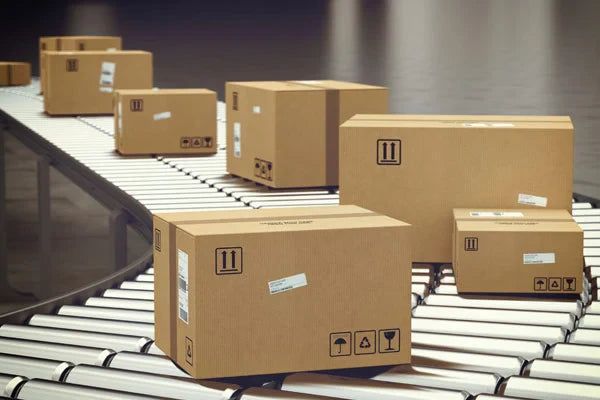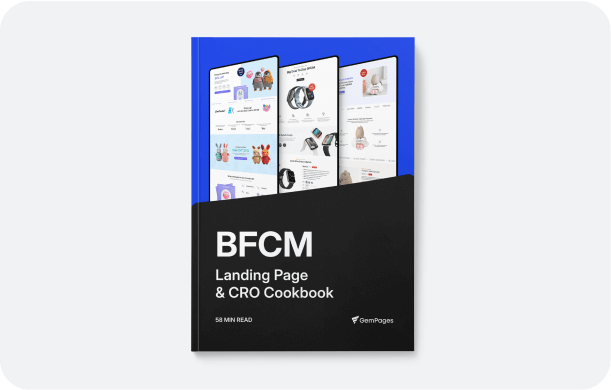Bulk Packaging: What Is It & Why Is It Important?

You are a Shopify owner, and sometimes there are cases when you have to deliver your products/inventory in large amounts, that’s when bulk packaging comes into place.
This process is not similar to a regular delivery to customers. Instead, warehouses or factories are usually the destination of bulk packaging.
One of the biggest reasons why many eCommerce stores favor it is due to its cost-saving benefit, which can help store owners save thousands of dollars in product transporting fees.
Yet, there is more to it. Read on and explore the details of bulk packaging with GemPages!
What Is Bulk Packaging?
Bulk packaging is basically how products are packed when they're being shipped in large amounts, either to stores, warehouses, or factories, not directly to the final customer.
However, it is simply throwing stuff in a big box, bulk packaging requires the package to be beautifully designed and carefully protected to get to the final destination safely.
When doing this process, the store owner must figure out who they want to send the package to.
For example, if it’s for a distributor or a filler (someone who handles the product before it hits store shelves), the packaging might just need to be strong and practical.

Bulk packaging is for shipping large product amounts. Source: Paper Mart Blog
Types Of Bulk Packaging
Depending on the format of the products you are selling, like liquid, powder, solid, etc, you’ll need to choose a packaging that best carries the product, such as:
-
Bottles & Jars: Large containers (up to 2.5 gallons) for bulk versions of consumer products, often with handles for easy use.
-
Pail Buckets: These durable plastic or metal buckets are used for liquids, solids, or hazardous materials in many industries.
-
Drums: Big barrels made of steel, plastic, or fiber used to ship large amounts of materials like powders or chemicals.
-
IBC Totes: Extra-large tanks (about 275 gallons) used to transport industrial liquids, often reusable and built for tough jobs.
-
Corrugated Boxes: Strong cardboard boxes that protect products during shipping, often used as outer packaging

Different types of bulk packaging. Source: Nova Custom Boxes
Why Is Bulk Packaging Important For Shopify Stores?
First off, let’s explain the process of bulk packaging in eCommerce.
Similar to its definition, bulk packaging in eCommerce is basically how companies pack and move large quantities of products or raw ingredients, either to make the final product or to distribute it.
For example, a company like Superfoods, which sells organic snack mixes, uses bulk packaging to ship raw ingredients (like almonds and goji berries) to their production facility. Then, it ship the finished snack blends to its distribution center before they’re packaged for customers.

Real-life example of bulk packing for specific products. Source: Illuxtron
With that being said, you can see the benefits of bulk packing in eCommerce, and to Shopify stores, specifically:
-
It saves you money: Buying packaging materials in bulk is more cost-effective in the long run. You’re not constantly reordering, and you often get better prices when you buy more at once. Plus, it can lower your shipping costs, too.
-
It helps with storage: If you’re storing products in a warehouse or even at home, bulk packaging makes it easier to stay organized. Everything has its place, and you can stack or store items more efficiently.
-
Shipping becomes cheaper: When you use bulk packaging, you’re not paying over and over for shipping smaller packages. You can ship more at once, and that often means lower costs per item.
-
Your products stay protected: Bulk packaging tends to be more durable. That means fewer damaged items, which makes both you and your customers happy.
-
It’s better for the environment: Most bulk packaging is designed to be more sustainable, using materials that are recyclable or reusable. So you’re reducing waste and doing your part for the planet.
-
It makes life easier for your team: Bulk packaging usually comes with features that make it easier to handle and move things around. That means your staff can work more efficiently without struggling with small or flimsy packaging.

How Bulk Packaging Is Used In Various Industries
As mentioned, for a Shopify store specializing in selling physical products, such as beauty, food, or even something industrial, bulk packaging plays a huge behind-the-scenes role in how things are made, moved, and delivered.
Take a look at how different industries use it:
1. Food, Dairy & Beverage
In this industry, bulk packaging is all about keeping things fresh and safe, using different types of packages like large cartons, pallets, or barrels that store things like milk, wine, or juice.
For instance, you are an F&B brand selling on Shopify using bulk packaging for large shipments to distributors or wholesale clients and making it easier to scale without lowering product quality.
2. Chemicals & Pharmaceuticals
These products need to be stored and transported carefully. Therefore, this process is built to handle sensitive or hazardous items safely.

Bulk packaging for Pharmaceuticals products. Source: YouTube Industrial Packaging Ltd
3. Personal Care & Beauty
This includes products like lotions, soaps, or cosmetics; more specifically, Shopify stores manufacture in volume or send product refills to retailers. Bulk packaging here might mean large containers or liners that keep ingredients clean and intact during shipping.
*Tip: An eco-friendly custom packaging helps you stay sustainable and obtain that trending minimalistic packaging.
4. Building Materials
While this is not particularly for eCommerce if you're operating a store about DIY, home improvement, or tools space, bulk packaging matters.
It will be extremely helpful for moving heavy or awkward materials efficiently and safely.
How To Do Bulk Packaging Effectively
Bulk packaging can be a game-changer for Shopify sellers for many reasons.
Yet, it isn’t as simple as just ordering larger boxes.
It takes some planning, cost analysis, and attention to branding and compliance. Thus, let’s break it down in a way that makes sense for you as a Shopify store owner.
1. Plan for Storage and Handling
Before you jump into bulk packaging, take a step back and think through your storage and handling setup.
This process often involves larger boxes, pallets, or containers, and that means you’ll need the space and equipment to manage them.
There are two scenarios.
Firstly, if you’re working out of your garage or a small office, you might quickly find yourself overwhelmed by the large volume and weight of bulk-packed shipments.

Example of how a company plans for its bulk product packaging. Source: Oracle Help Center
Secondly, if you’re scaling up, this could mean:
-
Renting warehouse space or storage units.
-
Buying or leasing equipment like pallet jacks or forklifts.
-
Hiring staff to handle inventory.
-
Repackaging items before shipping them to customers.
For instance, let’s say you’re using a third-party fulfillment center (3PL). Be aware that some places might charge extra for storing or breaking down bulk shipments, and you don’t want any additional fees being charged without initially agreeing.
Hence, before sending them a bulk shipment, reach out and confirm they can handle your packaging type.

2. Run a Cost-Benefit Analysis
Bulk packaging sounds smart, but if you are wondering whether it is necessary for your Shopify store, here is some expert advice!
Before making any move, do a cost-benefit analysis. This doesn’t have to be complicated, but it’s worth putting numbers to your decision.
Here’s how:
-
List the benefits. Think about how bulk packaging could save you money (like cheaper shipping rates or fewer materials), reduce labor time, or help you scale
-
List the costs. Consider the upfront cost of buying packaging in bulk, warehousing, extra tools or staff, or possible storage fees.
-
Add less tangible factors. Things like environmental impact, better organization, or improved customer experience matter, too, even if you can’t assign a dollar value right away.
Let’s analyze this example:
If you invest $5,000 upfront in reusable intermediate bulk containers (IBCs) but expect to cut future packaging costs by 70%, that’s a solid long-term win.
Bulk shipping to your fulfillment center cuts down your pre-order shipping cost by $1; multiply that by hundreds (or thousands) of orders per month, and now you are witnessing a major saving, which many businesses overlook.
This type of analysis helps you avoid guesswork and make data-driven decisions. It’s especially helpful if you’re trying to decide between sticking with traditional packaging or going all-in in bulk.

The larger the orders, the better the savings in reducing per-unit costs. Source: Stamped with love
3. Follow Industry Regulations
Depending on what you sell, there might be strict packaging regulations to follow, especially if you’re in food, health, beauty, or anything chemical-based.
In the United States, there are:
-
FDA regulates packaging for food, cosmetics, and pharmaceutical products.
-
EPA, DOT, and the UN cover packaging and transportation for hazardous materials.
-
OSHA and NFPA have rules for flammable products and workplace safety related to packaging.

Your products, such as food, must be verified by FDA, to sell. Source: The Realtime Report
Therefore, if you are one of those Shopify, it’s crucial to research what’s required. You might need special containers, labeling, or even shipping documentation.
Even if you don’t sell regulated items, keeping your packaging safe, durable, and properly labeled protects you from damage claims, shipping delays, or unhappy customers.
If this sounds overwhelming, don’t worry!
We suggest you consult with a third-party logistics provider (3PL) or hire a packaging compliance consultant to make sure you’re playing by the rules.
4. Consider Your Branding Needs
When you think of bulk packaging, branding might not be the first thing that comes to mind. After all, you’re not sending cute, individually packed boxes to your customers, right?
But this doesn’t count!
Branding still matters, even in bulk. If you’re shipping to retailers, wholesalers, or other resellers, custom-branded bulk packaging can:
-
Create a strong first impression.
-
Boost brand recognition.
-
Help you stand out from competitors.
-
Encourage repeat orders.
Let’s say you sell skincare products on Shopify, and you ship large boxes of inventory to beauty retailers. Using beautifully designed, eco-friendly bulk packaging with your logo and color palette can elevate your brand image. It tells buyers you’re serious, professional, and consistent.
However, if you're just sending products to a warehouse or fulfillment center, you might skip the fancy branding and focus on durability and cost. The key is to match the packaging to the audience and decide where branding makes the biggest impact.
Conclusion
In short, bulk packaging is especially helpful when transporting large orders, whether to the manufacturers or warehouses, yet not to final customers.
It particularly benefits Shopify stores in cost savings like shipping fees over time, saving storage, saving effort for your team, and more.
If you are one of the stores that sell physical products, especially in health, beauty, or supplement sectors, bulk packaging is even more necessary. Have fun!




 Facebook Community
Facebook Community Change Log
Change Log Help Center
Help Center









